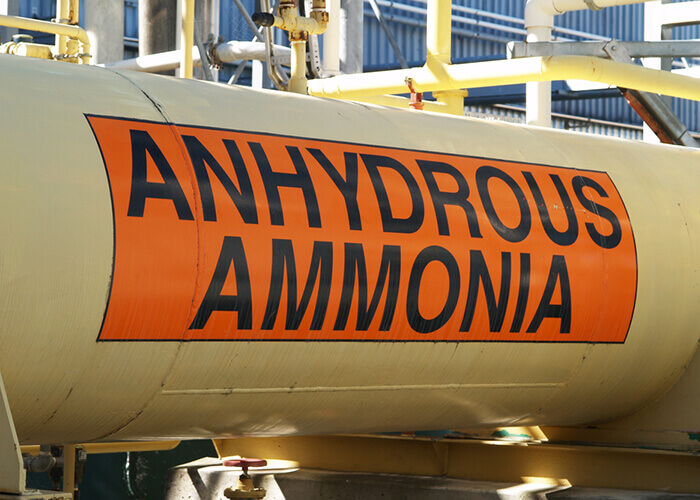OSHA has cited the Midwest Farmers Cooperative grain handling facility in Tecumseh, Nebraska for “12 serious safety violations,” following the death of a truck driver at the facility.
On March 20, 2014, a 250-gallon tank erupted, releasing anhydrous ammonia fumes into the air. A 63-year-old driver, a Midwest Farmers Cooperative employee, a Burlington Northern Santa Fe Railroad employee, and a deputy sheriff were all exposed to the noxious vapor.
The driver was allegedly not provided with a respirator or other protective clothing and was “overcome by anhydrous ammonia vapors” as he was transferring the liquid from a truck to buck storage tanks.
In the lungs, liquid anhydrous ammonia causes destruction of delicate respiratory tissue. Exposure to ammonia vapor may cause convulsive coughing, difficult or painful breathing, congestion and death. “The worker later died at the hospital from complications related to the ammonia inhalation. Three other workers were injured,” OSHA said in a press release.
The Midwest Farmers Cooperative facility stores and sells corn, wheat and soybeans, Workers Compensation reported. “The facility has an anhydrous ammonia storage capacity of 400,000 pounds. The cooperative sells the ammonia to area farmers.”
“Midwest Farmers Cooperative and other employers using this common farm fertilizer must recognize the hazards their employees face as they transport, store and transfer anhydrous ammonia,” said Bonita Winingham, OSHA’s area director in Omaha. “With the growing season in full swing, employers must train their workers to handle these chemicals properly and to protect against exposure to ammonia vapors.”
“Because of the investigation, OSHA cited Midwest Farmers Cooperative with 12 serious violations. Several violations involved OSHA’s Storage and Handling of Anhydrous Ammonia Standards, such as failing to provide an ammonia control system; provide employees with chemically impervious clothing; inspect and maintain ammonia equipment and piping to prevent potential leaks and system failure; and develop and train workers in an emergency response plan. The company was cited for storing the chemical in tanks located within 100 feet of a mainline railroad track,” an OSHA press release states.
